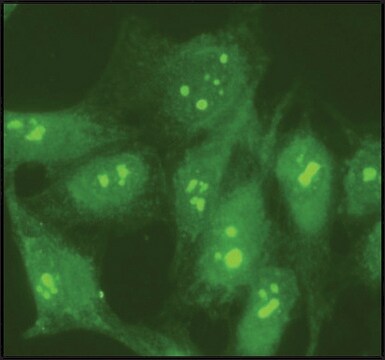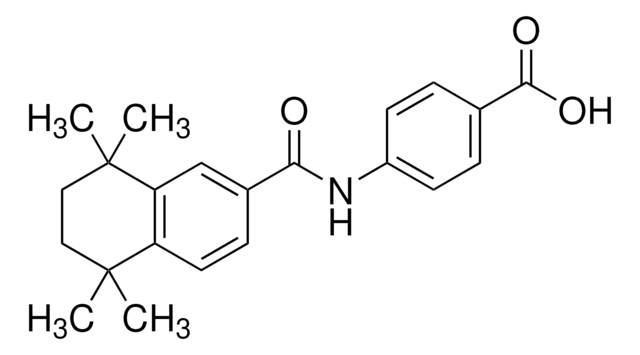N6288
Anti-Nucleolina−Atto 488
1.5-3.0 mg/mL, affinity isolated antibody, buffered aqueous solution
Sinónimos:
Anti-NCL, PROTEIN C23
About This Item
Productos recomendados
biological source
rabbit
Quality Level
conjugate
Atto 488 conjugate
antibody form
affinity isolated antibody
antibody product type
primary antibodies
clone
polyclonal
form
buffered aqueous solution
species reactivity
human, mouse, rat
storage condition
protect from light
concentration
1.5-3.0 mg/mL
technique(s)
direct immunofluorescence: 0.5-1.0 μg/mL using human HeLa, rat NRK and mouse 3T3 cells
fluorescence
λex 500 nm; λem 522 nm in PBS
λex 500 nm; λem 522 nm
UniProt accession no.
shipped in
dry ice
storage temp.
−20°C
target post-translational modification
unmodified
Gene Information
human ... NCL(4691)
mouse ... Ncl(17975)
rat ... Ncl(25135)
General description
Find more information here
Specificity
Immunogen
Application
Biochem/physiol Actions
Physical form
Storage and Stability
Disclaimer
¿No encuentra el producto adecuado?
Pruebe nuestro Herramienta de selección de productos.
Related product
Storage Class
10 - Combustible liquids
wgk_germany
WGK 2
flash_point_f
Not applicable
flash_point_c
Not applicable
ppe
Eyeshields, Gloves, multi-purpose combination respirator cartridge (US)
Certificados de análisis (COA)
Busque Certificados de análisis (COA) introduciendo el número de lote del producto. Los números de lote se encuentran en la etiqueta del producto después de las palabras «Lot» o «Batch»
¿Ya tiene este producto?
Encuentre la documentación para los productos que ha comprado recientemente en la Biblioteca de documentos.
Artículos
Immunoblotting (Western blot transfer) is a common technique in modern proteomics research.
Nuestro equipo de científicos tiene experiencia en todas las áreas de investigación: Ciencias de la vida, Ciencia de los materiales, Síntesis química, Cromatografía, Analítica y muchas otras.
Póngase en contacto con el Servicio técnico







